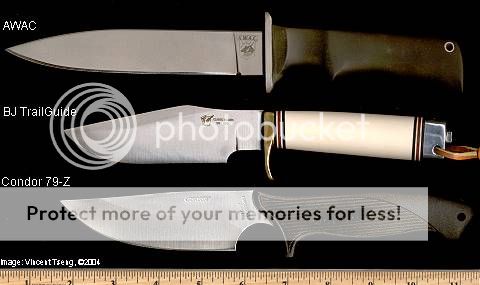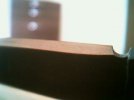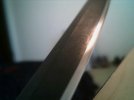My customized SAK - Victorinox Scientist that I have EDC'd since Feb/1993
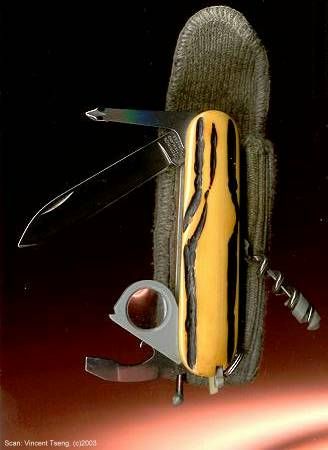
As I was touching up the blade I thought I'd share what I did.
Since it is the knife that I have on me everyday - I have tried to make it as practically sharp as possible.
That does not necessarily a more actute edge bevel angle - since it is well known that the Victorinox SAK (Inox) steel is not exactly Hi-tech or "premium" and hardened only to about 55-56Rc - too acute an angle will mean the knife probably will need re-sharpening, or at minimum touch-ups, often.
What I figured was to use the general purpose tried and tested final edge bevel angle of about 22.5deg per side for an inclusive angle of about 45deg.
However just having this bevel will do nothing to improve the standard SAK since that is already the bevel from the factory!
To improve the cutting ability withOUT going to a more actute angle means I have to try to get rid of, or at least minimize, the sudden hard transition from the edge bevel to the face of the blade.
There are two basic ways to do this - to cut in a secondary bevel to at least make a transition angle - or to smooth out that bevel transition "corner" - ie: give it a convex edge.
This is honing/grinding away the transition corner of the edge bevel and using a rolling/rocking action to make that transition convex, ie: minimizing any corners to make as close to a zero bevel as possible.
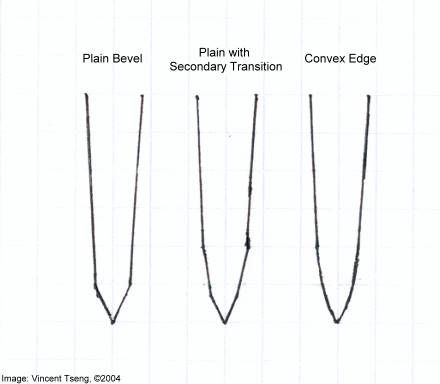
I still use crock-sticks to finish off the final edge but the convexed zero bevel is there as shown by these photos.
One can test this by pinching the blade face and pulling toward the edge - one should not feel any transition corner/discontinuity going from the blade's face to the edge.
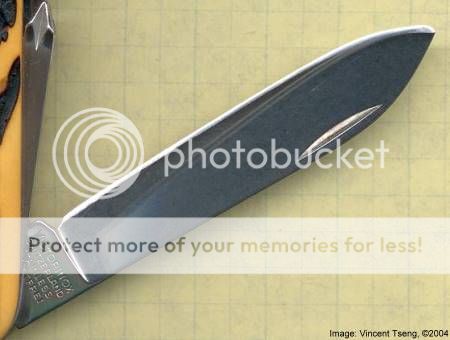
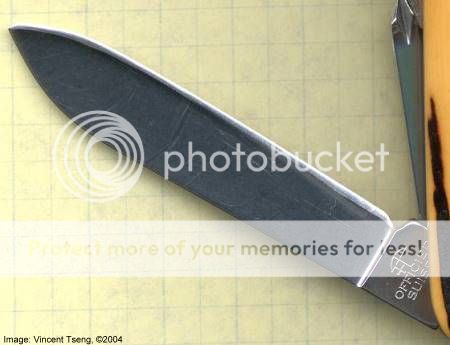
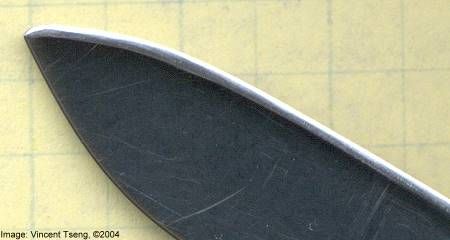
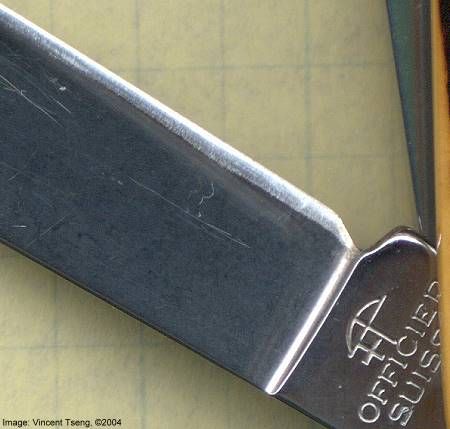
--
Vincent
http://UnknownVincent.cjb.net
http://UnknownVT.cjb.net

As I was touching up the blade I thought I'd share what I did.
Since it is the knife that I have on me everyday - I have tried to make it as practically sharp as possible.
That does not necessarily a more actute edge bevel angle - since it is well known that the Victorinox SAK (Inox) steel is not exactly Hi-tech or "premium" and hardened only to about 55-56Rc - too acute an angle will mean the knife probably will need re-sharpening, or at minimum touch-ups, often.
What I figured was to use the general purpose tried and tested final edge bevel angle of about 22.5deg per side for an inclusive angle of about 45deg.
However just having this bevel will do nothing to improve the standard SAK since that is already the bevel from the factory!
To improve the cutting ability withOUT going to a more actute angle means I have to try to get rid of, or at least minimize, the sudden hard transition from the edge bevel to the face of the blade.
There are two basic ways to do this - to cut in a secondary bevel to at least make a transition angle - or to smooth out that bevel transition "corner" - ie: give it a convex edge.
This is honing/grinding away the transition corner of the edge bevel and using a rolling/rocking action to make that transition convex, ie: minimizing any corners to make as close to a zero bevel as possible.

I still use crock-sticks to finish off the final edge but the convexed zero bevel is there as shown by these photos.
One can test this by pinching the blade face and pulling toward the edge - one should not feel any transition corner/discontinuity going from the blade's face to the edge.




--
Vincent
http://UnknownVincent.cjb.net
http://UnknownVT.cjb.net








